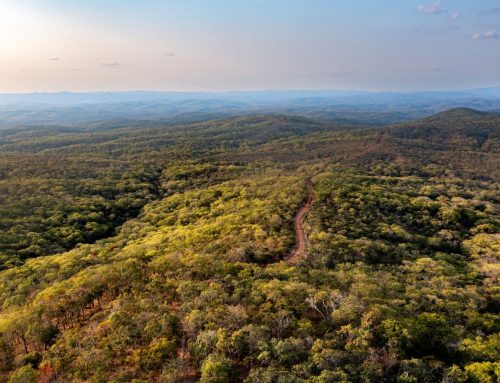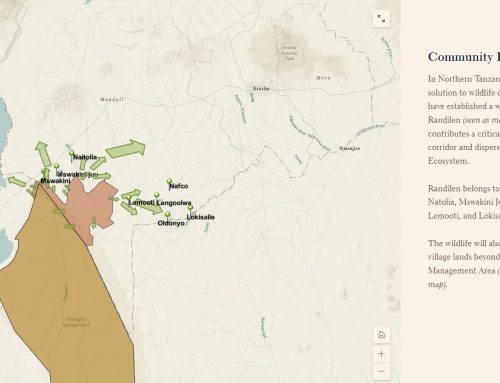 In the town of Mto wa Mbu, it seems that informing on poachers has become as big a business as poaching itself.
In the town of Mto wa Mbu, it seems that informing on poachers has become as big a business as poaching itself.
Less than a week after a tip from a community informant led to the arrest of a notorious local poacher and his accomplice at Manyara Ranch, Honeyguide-supported rangers rounded up three more illegal hunters on the night of April 29, this time before they could kill wildlife. Once again, intelligence from communities led to the capture.
“Just before midnight, we went on foot and tracked them,” explained Amos Mkea, Honeyguide’s Head of Anti-Poaching at Manyara Ranch. “Then we set an ambush.”
Three rangers hid in a thicket of bushes and just watched as the poachers walked by them. The rangers followed the suspects from a distance behind while a second group of rangers ambushed them from the front. Once surrounded, the poachers had no option but to give up.
The three suspects had machetes and other local weapons, a horn used to scare wildlife into traps, and other items commonly used by poachers. The men admitted that they had planned to go and kill wildlife for bushmeat that late night. The rangers then called in government anti-poaching authorities.
At Manyara Ranch, Honeyguide Foundation has partnered with the African Wildlife Foundation (AWF) and provides wildlife protection services in the area. Originally established as a cattle ranch during Tanzania’s colonial period, Manyara Ranch is now a 45,000-acre conservancy established by AWF and the Tanzania Land Conservation Trust (TLCT) and located in a critical wildlife corridor connecting Lake Manyara and Tarangire National Parks. Within the ecosystem, Honeyguide, in partnership with Big Life Foundation, also works in the Burunge WMA and will begin working in the Randilen WMA this month.
Poaching has decreased significantly in the area since Honeyguide began operations in Manyara Ranch in August 2013. For example, some 15 elephants were killed in the area in 2012, and 6 more were killed in the first seven months of 2013. Under Honeyguide’s watch, not a single elephant has been killed in Manyara Ranch over the past 9 months. The strong leadership of AWF’s ranch manager, Fidelis olle Kashe, and others has also been instrumental.
Wildlife populations are booming at the ranch right now, especially after recent rains. One wildlife viewing drive in April, for example, crossed paths with more than 530 wildebeest, 390 zebra, hundreds more of eland, gazelle, and other ungulates, some 71 elephants, a pride of 8 lions, and even a rare striped hyena and much more. Such a high concentration of wildlife, however, also attracts poachers.
About a half-hour drive away from Manyara Ranch sits the growing town of Mto wa Mbu at the base of the Great Rift Valley escarpment. It’s widely known that up to 130 poachers, mostly unemployed young men, live primarily in the Kigongoni area of Mto wa Mbu, which translates from Swahili as “River of Mosquitoes.” The town has long attracted migrant laborers looking for work in the tourism industry, commercial farms, and small-scale jobs. Unfortunately, the bushmeat trade lures many risk-taking males who cannot find work. All three poachers apprehended on April 29 came from Mto wa Mbu.
According to the United Nations Population Fund (UNFPA), an astounding 78% of Tanzania’s population is under the age of 35, and the total population has nearly doubled in the past 20 years. Issues like poaching become all the more complicated by such expanding population pressures and limited educational and economic opportunities.
“Some poachers say they will quit killing wild animals if they could find jobs,” said Mkea. “But it is challenging.”
For the time being, informing on poachers has actually become a growing business in Mto wa Mbu. Honeyguide maintains a confidential network of informants and pays them handsome rewards for information that leads to arrests and the confiscation of weapons and trophies. More than 90% of arrests in such community-based conservation areas are based on intelligence from courageous community informants. Receiving direct payments via mobile phone with M-PESA, the informants sometimes come from the ranks of the poachers themselves.
In fact, after the interrogation of suspects on April 29, the three young poachers had one of their own questions: “How can we become informants?”





